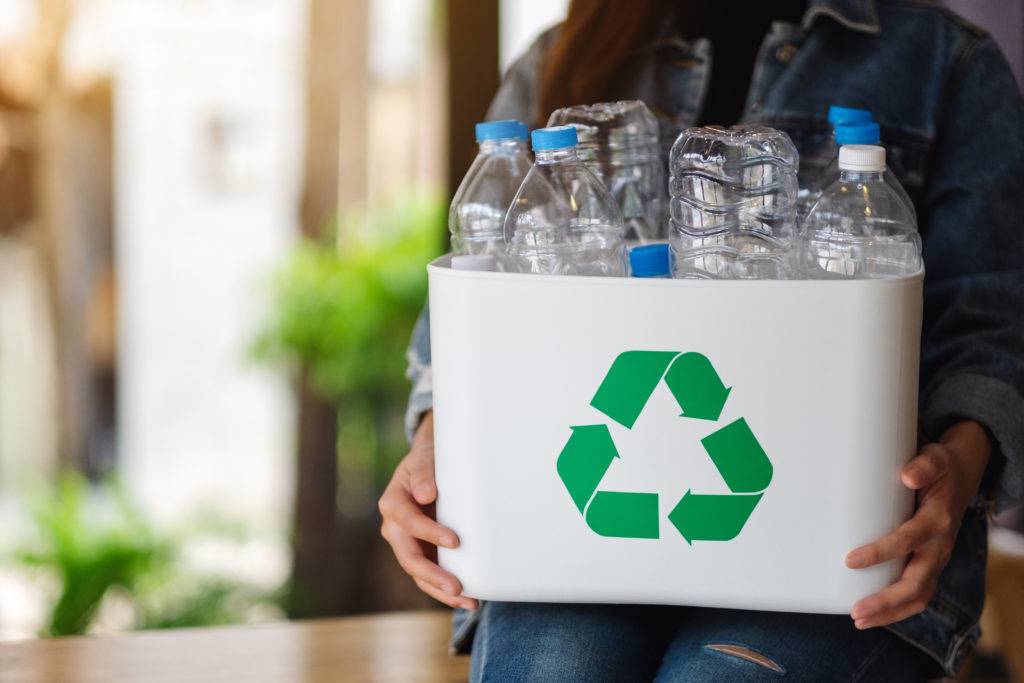We are lucky to live on such a beautiful, and diverse planet. From rainforests, lush and green spaces, beautiful beaches, mountain ranges, glaciers, and tropical paradises, it feels like there are truly endless natural wonders to behold. It’s a scary thought that future generations may not get to experience everything that we have today, but it’s a very real possibility. Across the world, we have seen a decline in our national resources and environment, that in the last few centuries has been happening at an alarming rate.
Instead of focusing on the fragile state that our ecosystem is in let’s focus on the positive impacts that each one of us in Travel Med can make to help sustain our resources and reverse some of the long-lasting damage that has been done by being more eco-friendly.
Ways to be more eco-friendly
Avoid single-use plastic and waste items when possible.
One of the best and worst things about plastic is that it’s made to last! When it’s not reused or recycled it can live in our landfills for centuries, or even float in our waters breaking down into microplastics that harm our environment. Replacing single-use plastic in your house can make a huge impact!
Getting items like; reusable water bottles, reusable sandwich bags, and grocery bags. You can even get items made of glass or metal too! Another great practice is bringing your own containers and buying your produce and shelf staples from the bulk section instead of pre-packaged items.
Use eco-conscious cleaning and household items.
As technology continues to improve, we are seeing so many amazing products and even more that are constantly being released. When shopping for laundry detergent, dishwasher pods, or even cleaning sprays, look for plastic-free options or products in reusable bottles. You can even find paper products made of bamboo fiber, beeswax wraps instead of cling wraps, and (everyone’s favorite) reusable straws.
With so many amazing products, there is almost no need to only be able to use something one time! You can even take advantage of compostable or biodegradable materials when possible as a better choice over regular plastic.
Recycle
This one everyone has heard about. Although this sounds like a simple process it can be quite complicated and can take a couple of extra steps. A perfect example is to make sure there’s no food residue left on the items, labels are removed f necessary, have mixed materials separated, and that the materials you’re putting out are in need. You can always check with your local community to see what items are taken and any specific steps needed!
Unfortunately, if there’s no market demand for certain materials, the suppliers won’t pay to reprocess them, and they’ll still end up in a landfill. Additionally, some items that are recyclable need to be taken to specific drop areas, such as plastic bags. Unfortunately, not all the plastic used is actually recycled. To get more information on what and how to recycle in your area, check your city’s regulations.
Eat fewer meat products and eat more plant-based
Now, this doesn’t mean that you must be vegetarian or vegan. Livestock farming is non-sustainable for our planet and the amount of meat products that are consumed as a population is enormous! Livestock farming takes a large amount of land and water to produce enough grains to feed their animals, which winds up eroding our topsoil. As a result, there is less viable land to produce our own needed grains and produce that we could be eating instead of meat. If that wasn’t enough, the byproducts from these animals and farms produce an enormous amount of greenhouse (carbon) emissions.
Eating more plant-based foods reduces these waste products and the resulting harm to our ecosystem. Now, this is not the easiest thing for everyone to do, but you can start small by cutting meat out of your diet for just a few meals each week. When you start getting used to that you can cut back even more.
Reducing our meat intake will give us the opportunity to practice responsible, pasture-raised livestock. This could work in harmony with the environment and allow us to consume healthier meat products in moderation. Plus, eating a plant-based diet has huge health benefits!
Use responsible means of transportation
As technology grows eventually, we will all own electric cars, and gasoline-run engines will be a thing of the past! But for now, we must get creative! Choosing to walk, bike, carpool, use reliable public transportation, or even opt for Uber Green are all great ways to cut down your carbon emissions.
Fun Fact! It has been shown that ground transportation uses significantly fewer greenhouse gases than airplanes do, so even choosing to travel by car, train or bus instead of flying when possible helps!
Grow plants and start a vegetable garden
In case you missed this topic in science class, plants consume carbon dioxide and produce oxygen. Housing plants and herb and vegetable gardens are great ways to contribute and will even help save money on groceries! A great practice that some major cities are using is vertical gardening on the outside of buildings to help combat some of the carbon emissions.
Eat less take-out and to-go foods
I’m sure you might have noticed that whenever you order take-out the packaging comes with a lot of single-use plastics! If you really don’t want to cook, try dining in a restaurant instead. This will not only reduce the number of single-use plastics but also save you money on delivery fees!
Conserve energy at home
It’s very easy to forget that the power that you use at home costs more than what you see on your utility bill. Electricity, water, and gas all have an impact on the environment, so being conscious of what you’re using is very important.
Making sure you unplug electric devices when they’re not being used, using only necessary lighting and LED bulbs, and using water sparingly are all great ways to save energy at home, not only for the environment but also for your wallet! We hope you have found this article helpful! If you are interested in starting your travel med career, reach out to one of our recruiters or visit our jobs board today!

